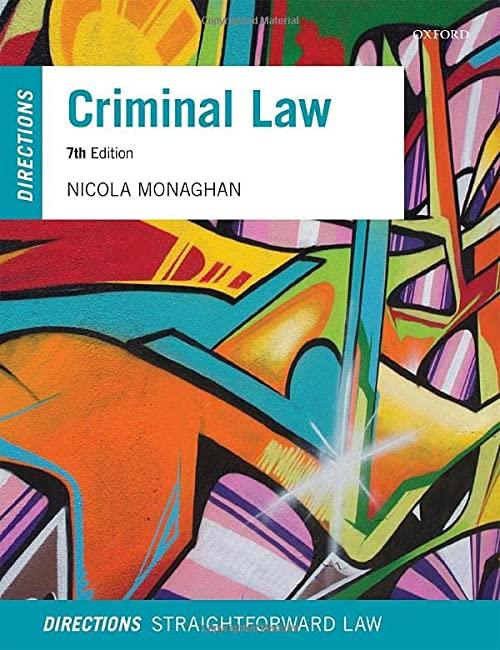Question
One of out key topics this week was The Duty To Accommodate In the context of employment, the Supreme Court of Canada has described the
One of out key topics this week was The Duty To Accommodate
In the context of employment, the Supreme Court of Canada has described the goals and purposes of accommodation:
... the goal of accommodation is to ensure that an employee who is able to work can do so. In practice, this means that the employer must accommodate the employee in a way that, while not causing the employer undue hardship, will ensure that the employee can work. The purpose of the duty to accommodate is to ensure that persons who are otherwise fit to work are not unfairly excluded where working conditions can be adjusted without undue hardship. The Ontario Human Rights Commission Defines undue hardship as.
Organizations covered by theCodehave a duty to accommodate to the point of undue hardship. Some degree of hardship may be expected - it is only if the hardship is "undue" that the accommodation will not need to be provided.[238]
In many cases, it will not be difficult to accommodate a person's disability. Accommodation may simply involve making policies, rules and requirements more flexible. While doing this may involve some administrative inconvenience, inconvenience by itself is not a factor for assessing undue hardship.
TheCodeprescribes only three considerations when assessing whether an accommodation would cause undue hardship:
- cost
- outside sources of funding, if any
- health and safety requirements, if any.
No other considerations can be properly taken into account under Ontario law.[239]Therefore, factors such as business inconvenience,[240]employee morale[241]and customer and third-party preferences[242]are not valid considerations in assessing whether an accommodation would cause undue hardship.[243]
These are difficult concepts to understand, especially when we have to apply them to real life situations. So to help try to understand these concepts. Please read the news articles below, and consider these questions. Do you believe the University of Toronto has met it's duty to accommodatestudents with disabilities? In the BC case, do you agree with theBC Supreme Court overturning theBC Human Rights Tribunal ruling, or should the plaintiffsappeal the ruling to a higher court? In the Hamilton article, what steps might you take to ensure the duty to accommodate is being followed?
Step by Step Solution
There are 3 Steps involved in it
Step: 1

Get Instant Access to Expert-Tailored Solutions
See step-by-step solutions with expert insights and AI powered tools for academic success
Step: 2

Step: 3

Ace Your Homework with AI
Get the answers you need in no time with our AI-driven, step-by-step assistance
Get Started


